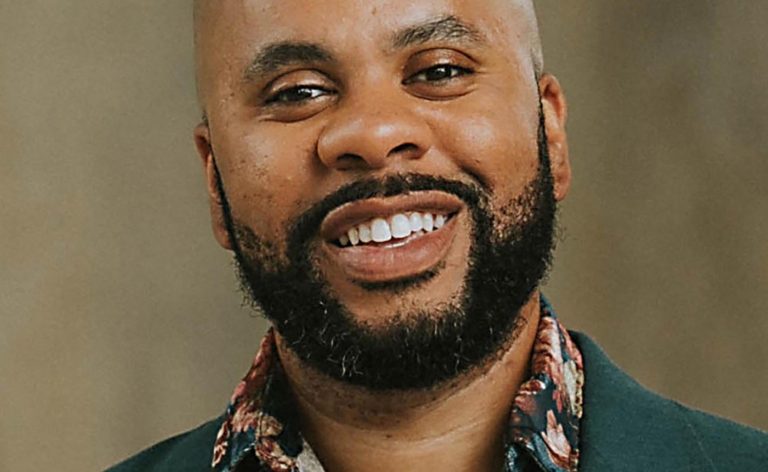René Bennett | (TNS) Bankrate.com
Saving isn’t always easy, but it pays off over time. It’s especially useful to have a solid savings foundation in place to protect yourself against economic uncertainty. And with the unemployment rate surging to 4.3 percent in August, the road ahead looks potentially rocky.
But how do you save more when money is tight? More than a third (34 percent) of working Americans are living paycheck to paycheck, according to Bankrate’s Living Paycheck to Paycheck Survey. Furthermore, 59 percent of people are uncomfortable with their amount of emergency savings, according to Bankrate’s Emergency Savings Report.
If you’re concerned about how much money is in your account, there’s no need to panic. There are simple ways to change your routine to boost your bank balance.
Key money saving tips
1. Automate your savings
To better organize your savings goals, start by getting a clear picture of your financial situation. Automating your savings is also a smart way to increase your savings.
Putting your savings on autopilot is an easy way to separate savings from spending money. It’s tempting to spend money after it hits your checking account. Automating your savings helps you avoid that temptation.
Two ways to automate your savings are to split up your direct deposit and funnel part of it into a savings account and to set up a recurring transfer from your checking account into a savings account.
Typically, you can take either a percentage of your paycheck or a fixed amount and use direct deposit into a savings account. You can also set an amount to be moved from your checking account into your savings account and then set the frequency of the transfer.
2. Set up an emergency fund
Common advice for emergency funds is to save at least three to six months’ worth of living expenses before you start saving for other goals.
The emergency fund is separate from your other savings. It is a ready source of cash for unexpected expenses and a hedge against tapping a 401(k) or other long-term savings accounts.
With worries about a continued slowdown in the job market making headlines, a sufficiently padded emergency fund can keep you from having to use credit cards or payday loans to pay bills if you lose your job.
The amount to set aside “depends on how long you expect to be looking for work,” says Judith Ward, vice president and senior financial planner with T. Rowe Price in Owings Mills, Maryland. “Households with just one worker or folks who earn commission may want a little more just because of that uncertainty.”
3. Tackle high-interest debt first
Debt is a significant obstacle to reaching financial milestones for many Americans, with 50 percent of credit cardholders carrying debt from month to month, according to Bankrate’s Credit Card Debt Survey. That’s up 6 percentage points from the start of the year.
It’s crucial to tackle high-interest debt as quickly as possible, because the interest added each month to the balance is money you instead could be saving. And with credit card interest rates averaging more than 20 percent, that debt is costing a lot of money.
A popular savings strategy for paying off debt is to zero out the highest-interest debt first. Once you’ve cleared that balance, move on to the debt with the next highest annual percentage rate (APR). This strategy, called the avalanche method, reduces how much interest you pay over the long run.
If you have multiple high-interest debts, debt consolidation can make it easier to tackle those debts by streamlining them into a single debt.
Bankrate’s Credit Card Payoff Calculator can help you calculate how soon you can pay off a credit card.
4. Save for different goals
Once you have established an emergency fund, separate your next priorities into three savings buckets, which include short-, medium- and long-term goals.
These three different types of goals will each require a somewhat different approach. Consider using a savings goal calculator to help track your progress for each.
Save for short-term goals
While there’s no strict definition of what a short-term goal is, these goals generally are those you aim to achieve within a couple of years or less. They tend to be specific and have more clear deadlines.
Some examples of short-term goals include:
—Car down payment
—Vacation
—Apartment rental deposit
—Home improvements
Savings for short-term goals should be fairly easily accessible. High-yield savings accounts, money market accounts and shorter-term certificates of deposit (CDs) make for the best places to store short-term savings funds. CDs come with some extra considerations, though, as these will require that you keep the money locked up until maturity. Look ahead on the calendar to know exactly when you will need the money to make sure you avoid paying any early withdrawal penalties to access the funds.
Save for medium-range goals
If your dream is to save for a down payment on a home, your child’s college education or your child’s wedding, you’ll need to go beyond belt-tightening and set up midterm savings buckets.
Midterm savings goals tend to take a few years to achieve, though usually not more than about five years. They may be more expensive than short-term goals.
Examples of medium-range goals include:
—Weddings
—Down payment for a house
—Pursuing higher education
—A child’s college fund
—Starting a business
—Paying off a debt
For these goals, you’ll want an account with some liquidity, though the money doesn’t need to be as immediately accessible as with short-term goals. You may also want to take different strategies with the account, such as setting up savings buckets within a single account or laddering CDs.
Save for long-term goals
Long-term goals typically aren’t achieved for at least five years. Retirement is usually the biggest long-term goal for savers. Retirement is perhaps the one savings goal where the time horizon is long enough that you can usually ride out market volatility that’s common when investing in stocks and bonds.
Another long-term savings goal might be paying off a large debt, such as a mortgage. These debts require consistent financial planning over time, and their longer time horizon also means that the way you save for them may change over time as you go through personal life changes. For example, if you get a higher-paying job, you can contribute more to paying off a debt.
Saving for the longer-term often requires looking beyond standard banking products, such as savings deposit accounts and CDs, to earn higher rates of return on your savings.
5. Use multiple savings accounts
Having more than one savings account is another way to earmark your money for different financial goals. Having multiple savings accounts can help ensure that money meant for one savings goal isn’t being used for another.
If all of your savings are in one account, for example, money meant for your emergency fund might accidentally be used for a vacation.
Having multiple savings accounts also gives you a clearer picture of how you’re progressing toward your different savings goals. If you have $20,000 saved, and it’s all in one account, it may be harder to track that you have $5,000 saved for an emergency fund and $15,000 for a home purchase.
And because many banks offer savings accounts that feature the same interest rate, no matter how low your balance, you don’t need to put all your savings in the same account to get the highest yield.
Additional ways to save money
Cut back on your expenses
The thought of spending less can seem impossible in today’s high-priced environment, but it’s crucial to put your entire budget under a microscope to look for opportunities to trim. Examine your recent spending patterns to see if there are obvious ways to shrink your monthly bills.
Don’t forget to think about your recurring charges for items like car insurance and homeowners insurance, too. If you’ve been with the same provider for years, you’ve likely been seeing regular increases to your premiums. Compare some other quotes to see if there are better deals available.
Use your mobile banking app
Mobile banking apps have made it easier than ever to manage your finances on the go and keep track of your savings. Many of these apps offer automated savings features, virtual savings envelopes and unique budgeting tools to help you stay on top of your spending. Plus, since they’re part of your bank offering, they don’t have any additional charge. If you’re looking for a more sophisticated tool that does a bit more, you can explore the best budgeting apps – although some of those will come with a monthly or annual fee.
Try a savings challenge
Saving doesn’t always feel like the most fun assignment; after all, it likely means taking your lunch to work and skipping that evening happy hour with your friends. However, you can make saving money more enjoyable by turning it into a game or challenge. For example, the 52-week savings challenge is a popular savings strategy that encourages consumers to save a small amount of money each week for a year, increasing the amount you save gradually over the year. By making saving into a fun challenge, you can stay motivated about making progress toward your financial goals. There are other ways to create a fun game for yourself, too, such as a challenge to spend nothing at all for a weekend or a full week other than your regular bills that you need to pay to maintain a good credit score.
___
(Visit Bankrate online at bankrate.com.)
©2024 Bankrate.com. Distributed by Tribune Content Agency, LLC.












